- Home
- H. Beam Piper
Uller Uprising
Uller Uprising Read online
Produced by Greg Weeks, Sankar Viswanathan, and the OnlineDistributed Proofreading Team at https://www.pgdp.net
Transcriber's Note:
Extensive research did not uncover any evidence that the U.S. copyright on this publication was renewed.
H. BEAM PIPER
ULLER UPRISING
ACE SCIENCE FICTION BOOKS
NEW YORK
* * * * *
This Ace Science Fiction Book contains the complete text of theoriginal hardcover edition. It has been completely reset in a typefacedesigned for easy reading, and was printed from new film.
PRINTING HISTORYTwayne edition/ 1952Ace edition/ June 1983
Copyright (C) 1952 by Twayne Publishers, Inc.Copyright (C) renewed 1983 by Charter Communications, Inc.Introduction (C) 1952, 1983 by Dr. John D. ClarkNew Introduction (C) 1983 by John F. CarrCover art by Gino D'Achille
* * * * *
Introduction to
_ULLER UPRISING_
by John F. Carr
With the publication of this novel, _Uller Uprising_, all of H. BeamPiper's previously published science fiction is now available in Aceeditions. _Uller Uprising_ was first published in 1952 in a TwayneScience Fiction Triplet--a hardbound collection of three thematicallyconnected novels. (The other two were Judith Merril's _Daughters ofEarth_ and Fletcher Pratt's _The Long View_.) A year later it appearedin the February and March issues of _Space Science Fiction_, edited byLester Del Rey.
The magazine version, which was abridged by about a third, wasbelieved by many bibliographers to be the only version--and as anovella it was too short for book publication. The Twayne version hada small print run and is so scarce that few people have seen it. Thosebibliographers who knew of its existence assumed that both versions of_Uller_ were the same. It was through a telephone conversation withCharles N. Brown, publisher of _Locus_ and correspondent with Piper,that I learned about the Twayne edition and its greater length. Brownallowed me to photocopy his original, for which we owe him a debt ofthanks; because the Twayne version is not only novel length, but farbetter than the shorter one that appeared in _Space Science Fiction_.
Probably the most surprising and interesting thing about the Twayneedition is the essay that forms the introduction to that volume, andis reprinted here. The essay is by Dr. John D. Clark, an eminentscientist of the fourties and fifties and one of the discoverers ofsulfa, the first "miracle drug." It describes in great detail theplanetary system of the star Beta Hydri, and gives the names of thoseplanets: Uller and Niflheim. A publisher's note states that Clark'sessay was written first, and given to the contributors as backgroundmaterial for a novel they would then write.
The fans of H. Beam Piper seem to owe a great debt to Dr. Clark._Uller Uprising_ became the foundation of Piper's monumentalTerro-Human Future History; the first story where we encounter theTerran Federation. In it we learn about Odin, the planet that will oneday be the capital of the First Galactic Empire; and humble Niflheim,which in more decadent times will become a common expletive, a wordmeaning hell. This is also where Piper introduced and explained theAtomic Era dating system (A.E.). _Uller Uprising_ is set in the earlyyears of the Terran Federation's expansion and exploration, an epochof great vitality. In "The Edge of the Knife" Piper compares this timeof discovery to the Spanish conquest of the Americas. This feeling ofvigor and unlimited possibilities runs through all the earlyFederation stories: _Uller Uprising_, "Omnilingual," "Naudsonce,""When in the Course--," and, to a lesser degree, in the lateFederation novels, _Little Fuzzy_, _Fuzzy Sapiens_, and _Fuzzies andOther People_. (See _Federation_ by H. Beam Piper for a good overviewof this period.)
In these stories we see Terro-Humans at their best and at their worst:Individual heroism and bravery in the face of grave danger in _UllerUprising_; Federation law and justice in _Little Fuzzy_ and itssequels; and, in "Omnilingual" and "Naudsonce," the spirit of scienceand rational inquiry. Yet we also see colonial exploitation andsubjugation in _Uller Uprising_ and "Oomphel in the Sky," the greedand corruption of Chartered land companies in _Little Fuzzy_, andpolitical corruption in _Four-Day Planet_. These stories are about aliving Terro-Human culture, not a utopia.
It was Piper's attention to historical realism and his use of actualhistorical models that have helped his work to pass the test of timeand have led to his becoming the favorite of a new generation ofreaders more than twenty-five years after his death.
_Uller Uprising_ is the story of a confrontation between a humanoverlord and alien servants, with an ironic twist at the end. Likemost of Piper's best work, _Uller Uprising_ is modeled after an actualevent in human history; in this case the Sepoy Mutiny (a Bengaluprising in British-held India brought about when rumors were spreadto native soldiers that cartridges being issued by the British werecoated with animal fat. The rebellion quickly spread throughout Indiaand led to the massacre of the British Colony at Cawnpore.). Piper'snovel is not a mere retelling of the Indian Mutiny, but rather ananalysis of an historical event applied to a similar situation in thefar future.
* * * * *
Like many philosophers and social theorists before him, Piperattempted to chart the progress of human-kind; unlike most, however,he did not envision or try to create a system of ethics that would endall of humanity's problems. The best he could offer was his model ofthe self-reliant man: The man who "actually knows what has to be doneand how to do it, and he's going to go right ahead and do it, withoutholding a dozen conferences and round-table discussions and givingeverybody a fair and equal chance to foul things up for him."
Piper brought his own ideas and judgments about society and historyinto all of his work, but they appear most clearly in his Terro-HumanFuture History. While not everyone will agree with Piper's theoriesthey give his work a bite that most popular fiction lacks. One cannotread Piper complacently. And one can often find a wry insightsandwiched in between the blood and thunder.
Other future histories may span more centuries or better illuminatethe highlights of several decades, but until a rival is created withmore historical depth and attention to detail, H. Beam Piper'sTerro-Human Future History will stand as the Bayeux Tapestry ofscience fiction histories.
In many ways--certainly during his lifetime--Piper was the mostunderrated of the John W. Campbell's "Astounding" writers. He wasprobably also the most Campbellian; his _self-reliant man_ is almost amirror image of Campbell's "Citizen."
Piper died a bitter man, a failure in his own mind; shortly before hisdeath he believed he could no longer earn a living as a writer withoutcharity from his friends or the state.
Now he's the cornerstone of Ace Books. Had he lived long enough tofinish another half dozen books, he would have been among the sfgreats of the sixties....
But maybe he does know, after all. Jerry Pournelle, who was very muchinfluenced by Piper and in many ways considers himself Beam'sspiritual descendant--and incidently was John W. Campbell's last major_discovery_--has said that sometimes, when he's gotten down aparticularly good line, he can hear the "old man" chuckle and whisper,_atta boy_.

 The Edge of the Knife
The Edge of the Knife Genesis
Genesis A Slave is a Slave
A Slave is a Slave Last Enemy
Last Enemy Uller Uprising
Uller Uprising Ministry of Disturbance
Ministry of Disturbance Time and Time Again
Time and Time Again The Mercenaries
The Mercenaries Police Operation
Police Operation He Walked Around the Horses
He Walked Around the Horses Time Crime
Time Crime Dearest
Dearest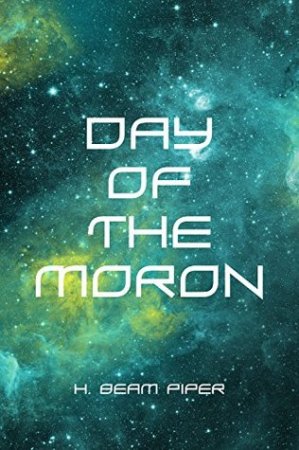 Day of the Moron
Day of the Moron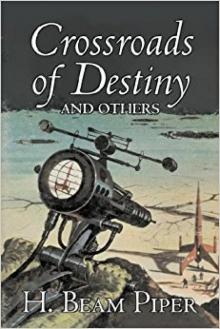 Crossroads of Destiny
Crossroads of Destiny Graveyard of Dreams
Graveyard of Dreams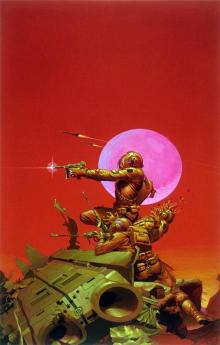 The Cosmic Computer
The Cosmic Computer Ullr Uprising
Ullr Uprising Operation R.S.V.P.
Operation R.S.V.P. Rebel Raider
Rebel Raider Murder in the Gunroom
Murder in the Gunroom Space Viking
Space Viking The Answer
The Answer A Planet for Texans (aka Lone Star Planet)
A Planet for Texans (aka Lone Star Planet) Little Fuzzy
Little Fuzzy Four-Day Planet
Four-Day Planet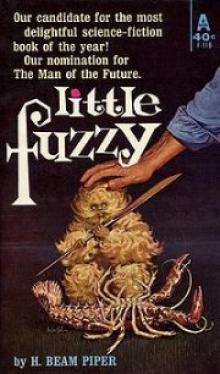 Little Fuzzy f-1
Little Fuzzy f-1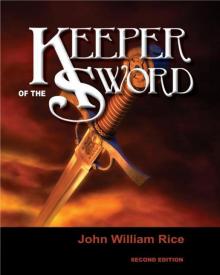 Keeper
Keeper The H. Beam Piper Megapack
The H. Beam Piper Megapack H. Beam Piper
H. Beam Piper Lord Kalvan of Otherwhen
Lord Kalvan of Otherwhen Fuzzy Sapiens f-2
Fuzzy Sapiens f-2 Fuzzies and Other People f-3
Fuzzies and Other People f-3 TIME PRIME
TIME PRIME Fuzzy Sapiens
Fuzzy Sapiens Lord Kalvan of Otherwhen k-1
Lord Kalvan of Otherwhen k-1 The Second H. Beam Piper Omnibus
The Second H. Beam Piper Omnibus